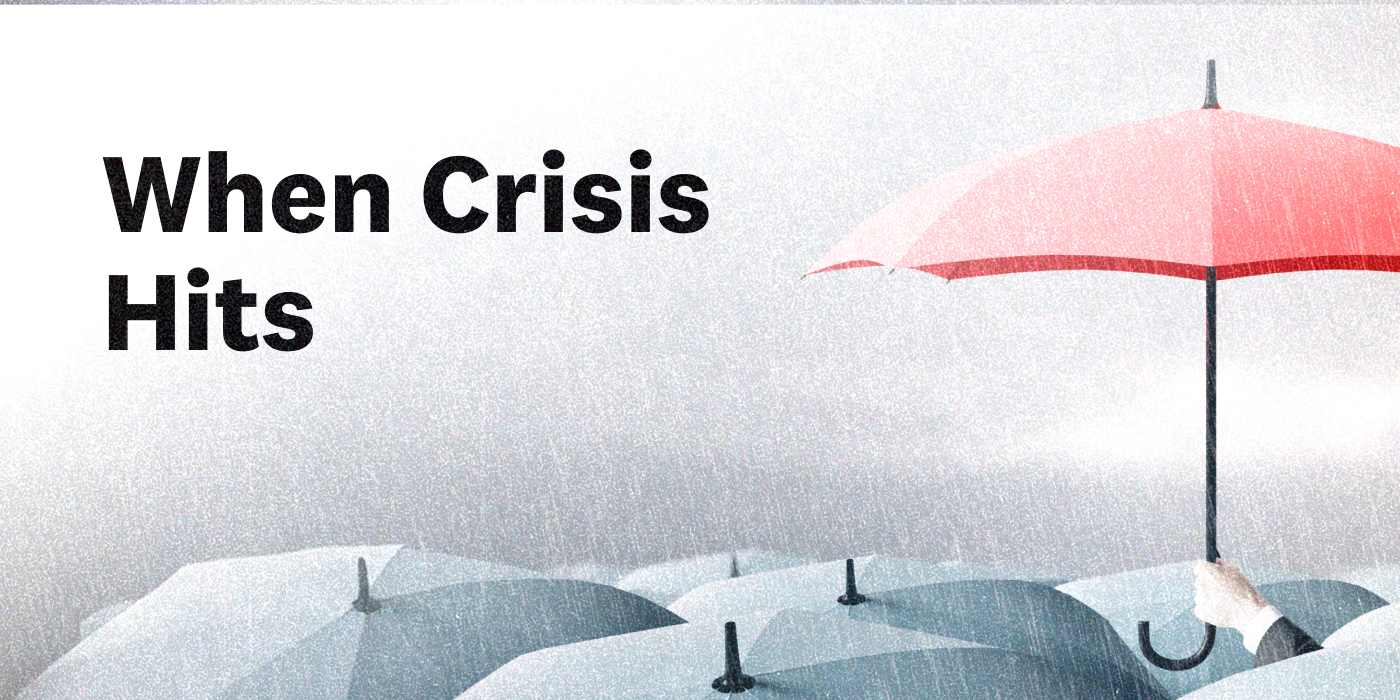Many nonprofits feel the ripple effects of crises long after headlines move on. A government shutdown, sudden policy shift, or unexpected funding disruption can delay grants, put key programs at risk, and push communities that already live on the margins even closer to the edge.
In moments like these, your team is juggling financial forecasts, program adjustments, and board conversations. It’s understandable if communications feel like one more fire to put out. But there is one thing you can control right now: how you communicate with donors.
Rapid response planning gives you a way to move quickly, communicate with clarity, and invite support without sounding panicked. You don’t need a script for every scenario, but you do need a plan you can activate in hours, not weeks.
1. Establish a Rapid Response Framework
When a crisis hits, the biggest risk is losing time to internal confusion (what to say, when to say it, who should sign off). A simple framework helps you answer those questions before you need to hit send.
Build your rapid response team
Identify a small cross functional group that will lead your response in times of crisis:
- A senior decision maker
- A communications or marketing lead
- A development lead who understands donor segments and priorities
- Program staff who can speak to on the ground realities and impact
Clarify who approves what and when additional board or executive input is required. When a trigger event happens, this team convenes, aligns on messaging, and decides on the first wave of outreach.
Define triggers that activate the plan
You will not need to respond to every headline. Instead, define the moments that will trigger your rapid response plan, such as:
- Major shifts to government funding that directly affect your programs
- Policy changes that affect your clients’ eligibility or access to services
- Local or national media attention that puts your issue in the spotlight
When any of these occur, the response team knows to spring into action.
Prepare core templates in advance
In a moment of crisis, writing from scratch slows you down. Instead, you want to lean on pre-established templates that allow you to “hit the ground running” with clear, ready messaging. Before crisis strikes, create a small library of templates that you can customize:
- A short organizational statement for your website and social channels
- A donor-facing email that shares impact, urgency, and a clear call to action
- A briefing outline for staff or volunteer leaders
- SMS copy that points supporters to a key resource or appeal
Avoid the temptation to ‘copy and paste’ without edits. Your Rapid Response templates are starting points that preserve your voice and values when pressure is high
Use a Crisis Messaging Doc (CMD)
To keep everything organized, save your plan in a Crisis Messaging Document:
- Triggers and decision tree
- Key messages and FAQs
- Draft email, SMS, and social copy
- Roles, responsibilities, and approvals
Are you in need of a ready-to-use structure for your next crisis moment? Fill out the short form below to download our Crisis Messaging Document template and adapt it for your team. Over time, this document becomes a living reference that your team can refine after each rapid response moment.
2. Communicate with Transparency and Compassion
Donors are navigating uncertainty too. Some may work for federal agencies. Others may be watching the news and wondering whether their gift still matters in a moment that feels overwhelming in scale. Your job is to help them connect the big picture to your specific mission.
Be clear about what is happening
Avoid vague language like “current events” or “recent developments.” Instead, name the crisis and plainly explain how it is affecting your work. For example:
- “Due to the ongoing government shutdown, one of our key grants is delayed. That funding supports our legal clinics that help families keep housing and benefits. Here is what that means for the coming weeks.”
If the landscape is still evolving, you can say:
- “We are still waiting on final notice about timing for federal payments. In the meantime, we are monitoring cash flow carefully and prioritizing services that are most essential for our clients’ safety and stability.”
Honesty and transparency build trust. Donors would rather hear that you are still assessing the impact than receive an overly polished message that feels disconnected from reality.
Balance urgency with empathy
It is appropriate to make an urgent ask in this moment. It is equally important to lead with compassion and empathy.
- Acknowledge that donors may also be feeling the impacts of the crisis
- Use respectful, people-first language about clients and communities
- Focus on specific outcomes that donor support can protect or restore
For example:
- “If you are in a position to give today, your support will help us keep our helpline staffed and available to the families who are calling us in crisis. If a financial gift is not possible right now, sharing this message with your community is another powerful way to stand with us.”
You are inviting supporters into partnership, not placing the burden of solving the crisis on them.
Maintain people-first language
Even when timelines are tight, aim for messages that sound like one person speaking to another, not like a press release:
- Use “you” and “we”
- Avoid jargon and acronyms wherever possible
- Lead with one or two clear points instead of trying to say everything at once
This is how you help donors feel seen, not just solicited.
3. Leverage Every Channel
Your plan is in place and your message is clear. The next step is getting that message out into the world. The goal is not to be everywhere at once. It is to use each channel for its strengths, in a sequence that builds urgency without creating confusion.
Production realities make certain channels quicker to launch than others. We’ve found it’s possible to turn around emergency communications within the timelines outlined below.
Website
- Within the first 24 hours, publish a short press statement on your website that explains how the crisis is affecting your work
- Pin it in a visible location such as your homepage, alert banner, or a dedicated “Updates” page
- Within the first 24 hours, send out a concise “breaking news” style email that leads with what donors need to know
- Explain how the crisis is affecting your services
- Include a clear call to action, whether it is making a gift, sharing the message, or attending a briefing
Social Media
- Share key points from your email as posts across your social channels
- Point people to your site or a dedicated landing page where they can read more and take action
- Use visual elements like pull quotes or simple graphics for visibility
Text and SMS
- Within 24-48 hours, send a short, skimmable text to your opted-in list that links back to your emergency appeal or update
- Include clear language such as “Because of the shutdown, our housing hotline is seeing double the calls. Your gift today keeps families connected to critical help: [short link]”
Telemarketing
- Use outbound calling within 48-72 to connect with donors who have a strong history of engagement and may appreciate a person-to-person conversation
- Treat calls as opportunities to listen, answer questions, and invite support, not just to make a hard ask
- Coordinate closely with staff who manage major donor portfolios so outreach feels thoughtful and not duplicative
Urgentgrams and direct mail
- Within the first week of the crisis, consider an urgentgram or simple postcard appeal that can reach donors within a week to ten days
- Keep copy focused on the emergency need and how the donor can help support your work
- Mirror the core message you are sharing by email, text, and phone so donors see a consistent story across every channel.
- Include a strong reply device or QR code to keep giving easy
- Direct mail is also a strong vehicle for early impact updates and gratitude. You might follow an emergency ask with a short mailed thank you that includes a quote from a client or staff member who has been directly affected by the crisis.
4. Retain Crisis Donors Beyond the Moment
Emergency appeals often bring in new donors and re-engage lapsed ones. The challenge is that these gifts are not always followed by a second one.
Industry benchmarks suggest that retention rates for crisis donors can be very low. The good news is that targeted, thoughtful follow up can help change that story. You do not need a complex pipeline to keep crisis donors engaged. Start with a few intentional touch points.
Within 30 days
- Send a heartfelt thank you that acknowledges the urgency of their gift
- Share one or two concrete examples of what their gift has already made possible
- Invite them to stay connected through your newsletter or a short virtual briefing
Within 60 to 90 days
- Weave updates directly into your solicitations
- For example, if you are sending a spring appeal, include a short section that says, “Because of your support during the shutdown, we kept our legal clinics open when many families needed them most. Today, we are facing a new challenge…”
- This approach keeps donors informed while making a natural bridge to your next funding need.
At six months and one year
- Share a brief impact report that looks at what has changed since the height of the crisis
- Highlight lessons learned and how you are strengthening resilience going forward
- Use the one-year mark as an opportunity to invite renewed commitment from those who stepped in during the crisis
- Tag or segment donors who gave in response to crisis communications so you can speak to them directly
- Remember that not every touchpoint needs to be an ask. A well timed “Here is what your generosity made possible” message can be just as powerful for retention as a direct appeal. The goal is to help crisis donors understand that they did not just step in for a one time emergency. They became part of a long term story.
Final Thoughts
Rapid response is hard work. It asks your team to make smart decisions quickly, communicate clearly under pressure, and hold space for the real fear and uncertainty your community is feeling.
Having a plan in place is one of the most supportive things you can do for your staff and your supporters.
A strong rapid response plan helps you:
- Establish a simple, clear rapid response framework
- Communicate with clarity, honesty, and empathy
- Activate channels in a coordinated way rather than reacting piecemeal
- Stay connected to crisis donors long after the headlines move on
Together, these practices create stability in the middle of uncertainty.



